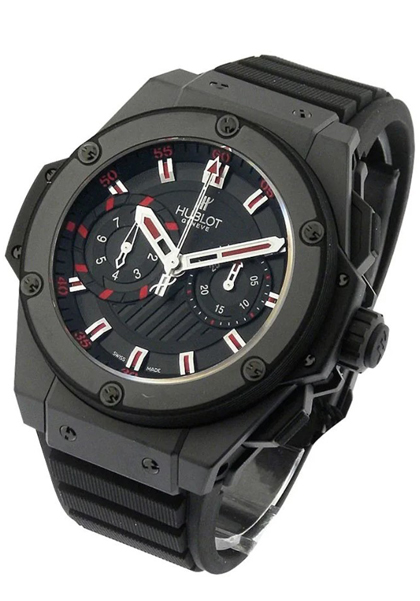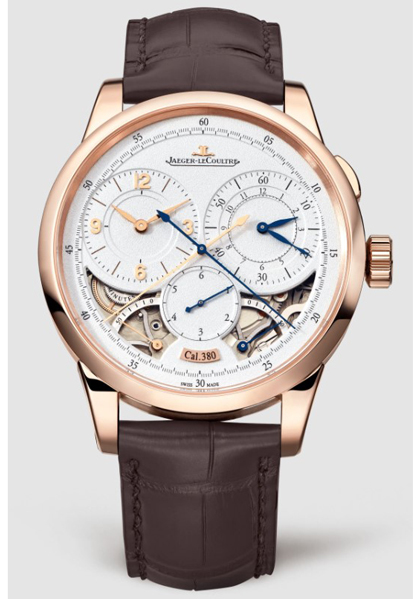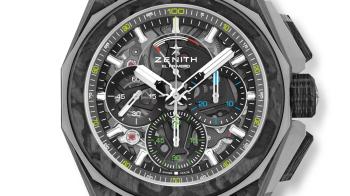After a few years of relative celebrity, after having been offered by a handful of brands, mostly ones that cared about sports timing, the chronograph with foudroyante just stopped beating altogether. There remains but one brand that still carries one, in a very particular way. So how did this niche complication go to its final resting place ?
First of all, let's define this thing. In French, the official language of watchmaking, foudroyante is the adjective derived from foudre, ie lightning bolt. So it means something between lightning fast and electrifying. The foudroyante second displays visible fractions of a second, at the same rate as the escapement. Central hands display the second and with a good magnifier, one can manage to read the increments between each second marker, where 1 degree out of 360 is divided into three or four. But that's no way to read a watch.
The foudroyante has its own subsidiary counter, with a proper and dedicated scale. It has 6 or 8 markers depending on the movement's frequency, respectively 3 Hz and 4 Hz. It's perfectly readable and it's been around since the 19th century. But it's always been a problematic complication.

In order to stop on the correct umpteenth of a second, the foudroyante has to spin for as long as the chronograph (or the movement) is running : that's one full spin per second, every second. That's a lot of motion, which consumes a lot of energy, i.e. power reserve.
Second issue, when a wheel and a hand are added so close to the balance wheel, where a caliber is fast and carries very little force, it weighs on the escapement and escapements hate that. The moment when the foudroyante starts, along with the chronograph, eats at the movement's torque, which eats away at its chronometric abilities. The foudroyante does precisely what mechanical movements hate, every thing that makes them less accurate.
It was becoming harder and harder for the foudroyante to make a point. Only a handful of movements have ever contained it and after a while, only manufacturer La Joux-Perret kept it going for a handful of clients such as Hublot. And then, poof, it was gone in 60 seconds. It's been over ten years since any proper foudroyante has been launched. There's worse, all the existing movements and watches that carried it have been retired with two notable exceptions : Jaeger-LeCoultre's Duomètre à Chronographe and Duomètre à Quantième Lunaire (which is not even a chronograph).

In the meantime, several attempts had been made to imitate it, with a little mechanical cheating if necessary, and to emulate it. It turned out it's highly compatible with what Zenith has been doing with their El Primero, high frequency movement. Even though they never officially used the term foudroyante, they were edging closer to it. What good is a fast movement if it provides no clear advantage related to its speed ? So the brand first invented El Primero Striking 10th, whose central hand spins once every ten seconds. That was fast, but not lightning fast.
After a while, they came up with Defy Extreme and then there was another foudroyante in the world, and a central one at that, not one puny little hand hidden in a sub-counter. It makes one full turn every second, is able to display the 1/100th of a second and its readability is unbeatable. For those mourning the death of the foudroyante, it should certainly come as a consolation that's it's outgrown its limitations in size and ability.








